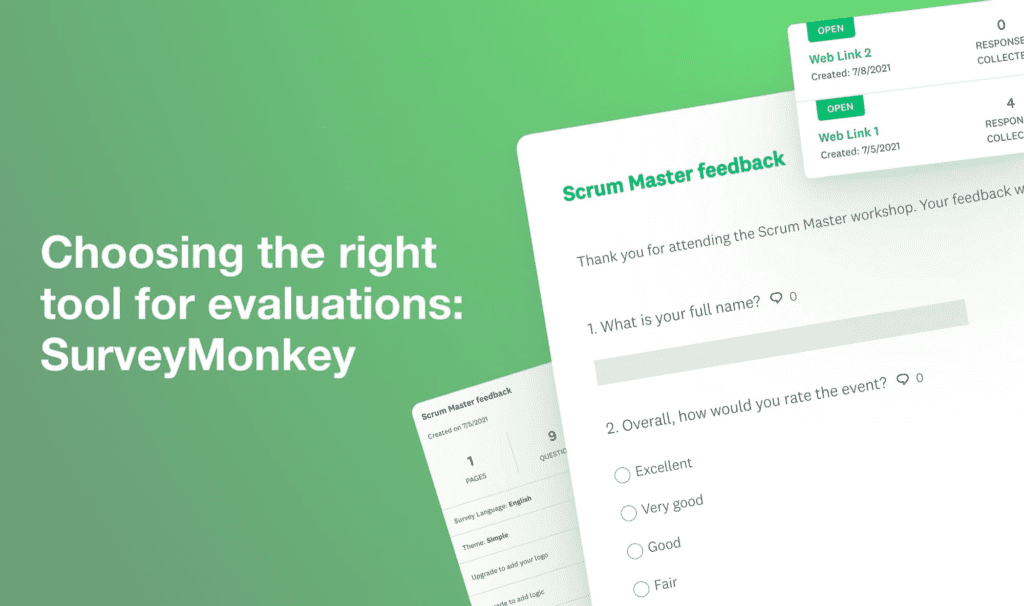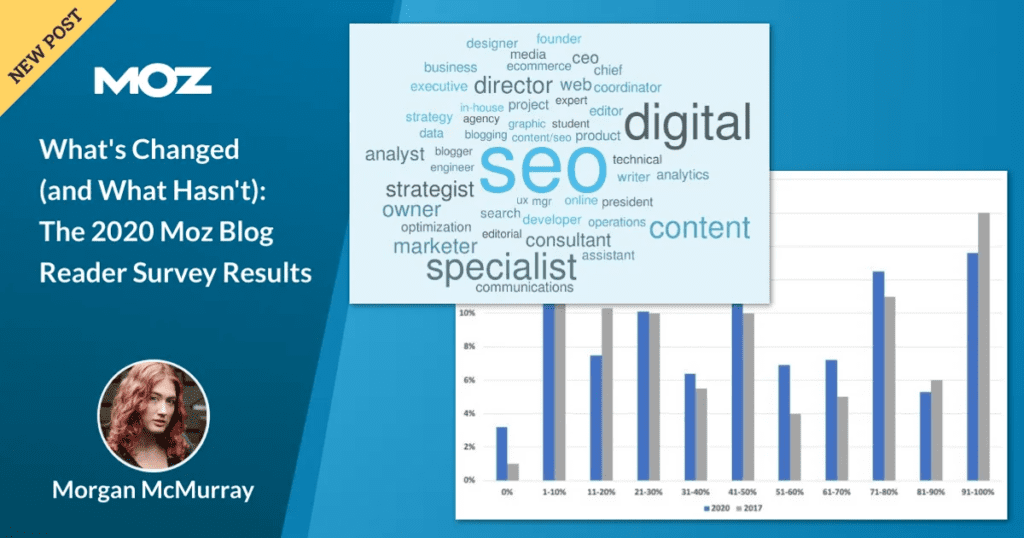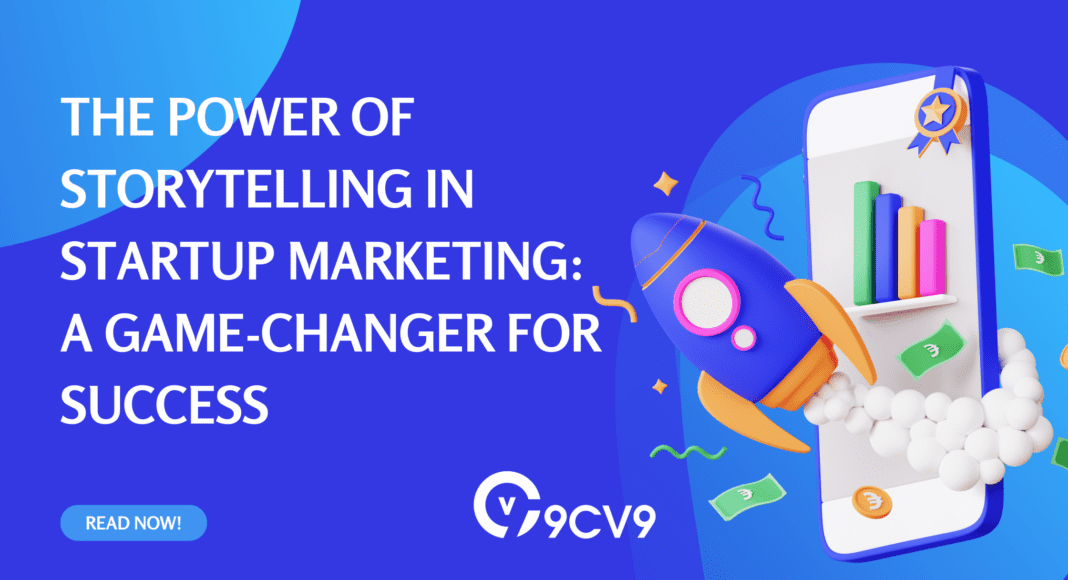Key Takeaways
- Elevate Your Brand: Storytelling is the key to differentiating your startup in a crowded market, creating an emotional connection with your audience, and building brand identity.
- Unlock Funding and Partnerships: Compelling storytelling in pitches attracts investors and partners, securing vital resources for growth and success.
- Navigate Challenges: Overcoming startup challenges is possible through resilience and strategic storytelling, positioning obstacles as opportunities for growth.
In the fast-paced and ever-evolving world of startups, the difference between success and obscurity often hinges on the ability to stand out, captivate an audience, and forge lasting connections.
In this digital age, where attention spans are shorter than ever, traditional marketing methods often fall short.
So, what’s the secret sauce that can transform your startup’s fortunes?
It’s the art of storytelling.
Picture this: A founder, in a humble garage, tinkering with a groundbreaking idea.
They’re not just building a product; they’re crafting a narrative—a narrative that has the potential to resonate with millions, secure investors, and ultimately disrupt an entire industry.
This is the essence of startup marketing today.
This is the magic of storytelling.
Welcome to a journey where words have the power to shape destinies, where narratives have the potential to turn the ordinary into the extraordinary, and where your startup’s success story is waiting to be written.
In this comprehensive guide, we’ll dive deep into “The Power of Storytelling in Startup Marketing,” uncovering the secrets, strategies, and real-world examples that can make storytelling the game-changer your startup needs.
Why Storytelling Matters in Startup Marketing

Before we embark on this enlightening journey, let’s address a crucial question:
Why does storytelling matter in the context of startup marketing?
Why is it more than just a buzzword thrown around in marketing meetings?
In the vast digital landscape where startups compete for consumer attention, storytelling serves as the ultimate differentiator.
It’s the golden ticket to bypassing the clutter and creating a connection that’s genuine, emotional, and memorable.
Think about it—when was the last time you were truly moved by a product description or a list of features?
Now, consider the last time a story, well-told, sparked your imagination and compelled you to take action.
The difference is palpable.
Stories have a unique ability to transcend the mundane and tap into the core of human emotion.
From ancient cave paintings to the most recent viral video, storytelling has been humanity’s most enduring method of communication.
It’s a universal language that binds us across cultures and generations.
And as a startup founder or marketer, this universal language can become your most potent tool.
The Psychology of Storytelling
To truly harness the power of storytelling, we must first explore the psychology behind it.
Stories have an uncanny ability to engage our brains in ways that mere facts and figures cannot.
But why is this the case?
The answer lies in the intricate workings of the human mind.
Our brains are wired to process information in the form of stories.
It’s not just a matter of preference; it’s evolution at work.
Throughout history, stories have been the primary means of passing down knowledge, culture, and wisdom from one generation to the next.
As a result, our brains have developed specialized neural pathways for processing and retaining narrative information.
But it goes deeper than that. When we hear a compelling story, our brains release oxytocin, often referred to as the “love hormone.” This hormone is associated with trust, empathy, and social bonding.
In essence, storytelling has the power to create a genuine emotional connection between the storyteller and the audience.
Additionally, stories are more memorable than raw facts and data.
Research has shown that people are more likely to remember information presented in the form of a story.
This is because stories activate multiple parts of the brain, including those responsible for sensory experiences.
When we hear a story, it’s as if we are living it, which makes the information more vivid and enduring in our memory.
In the context of startup marketing, understanding this psychology is akin to wielding a superpower.
It means you can create marketing campaigns that not only grab attention but also leave a lasting impression.
It allows you to establish trust, build emotional connections, and convey complex ideas with ease.
In short, it empowers you to turn your startup into a compelling narrative that your audience can’t resist.
The Journey Ahead
As we continue our exploration of the power of storytelling in startup marketing, we’ll delve into the practical aspects of crafting and sharing your startup’s narrative.
We’ll explore how to build a brand story that resonates, connect with your target audience on a deeper level, and infuse authenticity and values into your storytelling efforts.
We’ll also uncover the role of storytelling in various aspects of startup marketing, including content marketing, pitching to investors and partners, and overcoming common challenges and pitfalls.
So, are you ready to embark on this transformative journey?
Are you ready to unlock the game-changing potential of storytelling for your startup’s success?
Let’s begin our exploration of “The Power of Storytelling in Startup Marketing.”
Brace yourself for insights, strategies, and inspiration that could reshape the trajectory of your startup’s journey.
Before we venture further into this article, we like to share who we are and what we do.
About 9cv9
9cv9 is a business tech startup based in Singapore and Asia, with a strong presence all over the world.
With over seven years of startup and business experience, and being highly involved in connecting with thousands of companies and startups, the 9cv9 team has listed some important learning points in this overview of the power of storytelling in startup marketing.
If your company needs recruitment and headhunting services to hire top-quality employees, you can use 9cv9 headhunting and recruitment services to hire top talents and candidates.
Find out more here, or send over an email to [email protected].
Or just post 1 free job posting here at 9cv9 Hiring Portal in under 10 minutes.
The Power of Storytelling in Startup Marketing: A Game-Changer for Success
- The Psychology of Storytelling
- Building Your Brand Story
- Connecting with Your Audience
- Showcasing Authenticity and Values
- Leveraging User Stories and Testimonials
- Storytelling in Startup Content Marketing
- Pitching to Investors and Partners
- Overcoming Challenges and Pitfalls
1. The Psychology of Storytelling
Understanding the psychology behind storytelling is fundamental to unlocking its potential in startup marketing.
This section will delve deep into the neurological and psychological aspects that make storytelling a potent tool for capturing the hearts and minds of your audience.
The Brain on Stories: A Neurological Perspective
Neural Coupling: Stories ignite a phenomenon known as neural coupling.
When we listen to a well-told story, our brains synchronize with the storyteller’s brain.
This synchronization creates a shared emotional experience, fostering a deeper connection between the audience and the narrative.
- Example: Consider the success of Pixar movies. Films like “Toy Story” and “Finding Nemo” have resonated with audiences of all ages due to their compelling narratives. Viewers form emotional connections with animated characters, illustrating the power of neural coupling.

Mirror Neurons: Mirror neurons are a type of brain cell that activates both when we perform an action and when we observe someone else performing that action.
Stories activate these mirror neurons, making us feel as though we are experiencing the events and emotions depicted in the narrative.
- Example: Think of how effective product demonstration videos are when they tell a story. For instance, GoPro’s marketing often includes user-generated content, where the viewer can “experience” the adventure through the eyes of the user. This mirrors the action and creates a sense of connection.
Emotions and Memory: The Storytelling Cocktail
Emotional Resonance: Stories elicit emotions, and this emotional engagement is crucial for memory retention.
When we feel emotionally connected to a story, our brains release dopamine and oxytocin, which not only make the story memorable but also create a positive association with the storyteller.
- Example: Apple’s iconic “1984” Super Bowl commercial introduced the Macintosh computer with a dystopian narrative. The emotional impact of this story left a lasting impression, contributing to Apple’s brand identity.
Memory Enhancement: Research indicates that information presented in the form of a story is up to 22 times more memorable than facts alone.
Stories create a mental framework that organizes information, making it easier for our brains to process and recall.
- Example: MailChimp, the email marketing platform, uses storytelling in its ad campaigns. Their quirky, engaging narratives help users remember their brand when considering email marketing solutions.
Empathy and Connection: The Social Glue of Stories
Building Empathy: Stories allow us to step into the shoes of others, and experience their joys, challenges, and triumphs.
This empathy-building aspect of storytelling fosters a sense of understanding and connection with the characters or the storyteller.
- Example: The charity Water.org effectively uses storytelling to raise awareness about the global water crisis. Their narratives put viewers in the shoes of people who lack access to clean water, driving empathy and support for their cause.

Creating a Shared Identity: Through storytelling, individuals and groups can form a shared identity.
When people identify with a story, they are more likely to feel a sense of belonging and loyalty to the group or brand associated with that story.
- Example: Harley-Davidson has a dedicated fan base that goes beyond motorcycles. Their brand story is about freedom and rebellion, and Harley enthusiasts often see themselves as part of an exclusive “club” defined by this narrative.

Data-Driven Decisions: The Rational Side of Storytelling
Complementing Data with Stories: While emotions play a significant role, storytelling doesn’t exclude the rational mind.
Combining data with narratives can enhance decision-making.
Studies show that stories combined with data are more persuasive than data alone.
- Example: A startup seeking investment can use storytelling to convey both the market data supporting their product’s potential and the personal journey of the founder, creating a compelling narrative that appeals to both logic and emotion.
Statistics and Narratives: Statistics become more relatable when woven into a story. Presenting statistics without context can be overwhelming, but when integrated into a narrative, they become more accessible and memorable.
- Example: Hans Rosling’s TED Talks, such as “The Best Stats You’ve Ever Seen,” masterfully combine data and storytelling to make complex global trends and statistics engaging and understandable.
Incorporating these psychological insights into your startup’s storytelling strategy can elevate your marketing efforts.
Remember that effective storytelling doesn’t rely solely on one aspect but rather on the artful combination of emotional engagement, empathy-building, and data-driven decision-making.
By understanding the psychology behind storytelling, you’ll be better equipped to create narratives that resonate deeply with your audience.
2. Building Your Brand Story
Creating a compelling brand story is the cornerstone of effective startup marketing.
In this section, we’ll explore the steps to craft a brand story that not only resonates with your audience but also sets your startup apart from the competition.
Identifying Your Startup’s Unique Narrative
Understanding Your Origin Story
Every startup has an origin story that sets the stage for its journey. Identify the key moments, challenges, or inspirations that led to the creation of your startup.
Your origin story can humanize your brand and make it relatable to your audience.
- Example: The founders of Airbnb, Brian Chesky, Joe Gebbia, and Nathan Blecharczyk, started by renting out air mattresses in their apartment to make ends meet. This humble beginning became the foundation of Airbnb’s origin story.

Defining Your Core Values
What principles and values drive your startup?
Establishing and communicating your core values helps shape your brand identity.
It also attracts like-minded customers who share those values.
- Example: Patagonia, the outdoor clothing company, is renowned for its commitment to environmental sustainability. Their core values are integrated into their brand story and products, attracting environmentally conscious consumers.
Finding Your Unique Selling Proposition (USP)
Identify what makes your startup unique in the market. Your USP should address a specific pain point or offer a distinctive solution that sets you apart from competitors.
- Example: Slack, the messaging platform for teams, carved its niche by focusing on improving workplace communication and collaboration, making it a standout in the crowded messaging app market.
Crafting a Compelling Brand Story Framework
Character Development (Your Startup’s Persona)
- Create a Relatable Protagonist: In your brand story, your startup should be the relatable protagonist. Develop a persona for your startup that aligns with your audience’s aspirations and challenges.
- Introduce the Antagonist (Challenges and Solutions): Every story needs conflict. In your brand story, the antagonist represents the challenges your customers face. Highlight how your startup provides solutions and overcomes these challenges.
- Example: Tesla’s brand story centers around the antagonist of climate change. They position their electric cars as a solution to combat environmental challenges.
- Example: Dollar Shave Club’s founder, Michael Dubin, became the face of the brand in their viral launch video. His persona as a regular guy fed up with overpriced razors resonated with consumers.
Conflict and Resolution
- Narrate Your Journey: Your startup’s journey is a story in itself. Share the ups and downs, the challenges you’ve faced, and the milestones you’ve achieved. This builds authenticity and relatability.
- Example: Buffer, the social media management platform, openly shares their journey, including their struggles with layoffs and transparency in salaries, making them a transparent and relatable brand.
- Highlight Transformations: Show how your product or service transforms the lives of your customers. Stories of transformation are emotionally resonant and demonstrate the value you provide.
- Example: Weight Watchers (now WW) tells stories of individuals who have transformed their lives through their weight loss programs, creating a powerful emotional connection with their audience.
Setting the Stage (Market Context)
- Contextualize Your Startup: Place your startup within the larger context of your industry or market. Explain the problem your startup aims to solve and why it matters.
- Example: Airbnb’s brand story contextualizes the company by emphasizing the impersonal nature of traditional hotels and how Airbnb offers a more personal and unique travel experience.
- Utilize Data and Statistics: Incorporate relevant data and statistics to support the significance of the problem you’re addressing. This adds credibility to your story.
- Example: Warby Parker, the eyewear brand, uses statistics on the high cost of eyeglasses to underscore the need for affordable alternatives, positioning themselves as a solution to this problem.
Storytelling Elements That Resonate With Your Target Audience
Emotionally Engaging Content
- Appeal to Emotions: Emotions play a significant role in decision-making. Craft your brand story to evoke emotions that align with your audience’s values and aspirations.
- Example: Coca-Cola’s brand story often focuses on themes of happiness, bringing joy, and creating special moments, which emotionally resonates with consumers.
- User-Generated Content: Encourage customers to share their own stories and experiences with your product or service. These authentic stories can be powerful tools for connecting with your audience.
- Example: GoPro’s customers share thrilling videos and images captured with their cameras, creating a sense of community and adventure around the brand.

Measuring the Impact of Your Brand Story
Key Performance Indicators (KPIs)
- Engagement Metrics: Track metrics such as website traffic, social media engagement, and email open rates to gauge the impact of your brand story on audience engagement.
- Conversion Rates: Measure how your brand story influences conversion rates, whether it’s signing up for a newsletter, making a purchase, or requesting a demo.
Customer Feedback and Surveys
- Collect Feedback: Gather feedback from customers to understand how your brand story resonates with them. Use surveys and reviews to assess whether your narrative aligns with their perceptions.
- Testimonials and Case Studies: Showcase customer testimonials and case studies that illustrate how your product or service has positively impacted their lives or businesses.
Adaptation and Evolution
Stay Agile: As your startup grows and market dynamics change, be ready to adapt your brand story. Continuously evaluate whether your narrative remains relevant and resonant with your audience.
Storytelling Consistency: Ensure that your brand story is consistent across all communication channels, from your website to social media, to maintain a cohesive brand identity.
By carefully crafting and nurturing your brand story, you can create a powerful narrative that not only attracts and engages your target audience but also forms a lasting connection that sets your startup on the path to success.
3. Connecting with Your Audience
Once you’ve crafted a compelling brand story, the next crucial step in startup marketing is connecting with your target audience.
In this section, we’ll explore strategies and techniques to establish a deeper and more meaningful connection with your audience.
Understanding Your Target Audience’s Pain Points
Customer Research and Personas
- Detailed Buyer Personas: Create detailed buyer personas that outline your ideal customers’ demographics, interests, challenges, and aspirations. These personas serve as a blueprint for your marketing efforts.
- Example: HubSpot offers a free tool for creating buyer personas, making it easier for startups to understand and visualize their ideal customers.
- Data-Driven Insights: Utilize analytics tools to gather data on your website visitors, social media followers, and email subscribers. This data can provide valuable insights into their behavior and preferences.
Surveys and Feedback
- Conduct Surveys: Use online surveys and feedback forms to directly ask your audience about their pain points, needs, and expectations. Gathering this firsthand information can be invaluable for tailoring your messaging.
- Example: SurveyMonkey is a popular platform for creating and distributing surveys to collect valuable audience feedback.
- Analyze Customer Support Data: Analyze customer support interactions, including emails and chat logs, to identify recurring issues and concerns. This can inform your content and messaging strategies.

Tailoring Your Story to Address Audience Needs
Content That Solves Problems
- Educational Content: Develop blog posts, videos, or infographics that address specific pain points or provide solutions to common problems your audience faces.
- Example: Moz, a company specializing in SEO tools, offers an extensive library of educational content to help marketers solve SEO challenges.
- How-to Guides: Create step-by-step guides or tutorials that walk your audience through solving a problem or achieving a goal related to your industry or product.
- Example: Adobe’s “Adobe Creative Cloud Learn & Support” section includes extensive how-to guides for users of their creative software.

Personalized Experiences
- Email Personalization: Use data from your audience to personalize email marketing campaigns. Personalization can increase open rates and engagement.
- Example: Amazon’s product recommendation emails are a prime example of personalized email marketing.
- Customized User Journeys: Tailor user experiences on your website or app based on individual preferences and behavior. This can lead to higher user satisfaction and conversions.
- Example: Netflix customizes content recommendations for each user based on their viewing history and preferences.
Choosing the Right Communication Channels for Your Story
Social Media Engagement
- Platform Selection: Choose social media platforms that align with your audience’s demographics and interests. Different platforms cater to different audiences.
- Example: Instagram is popular among younger demographics, while LinkedIn is often favored for B2B audiences.
- Engage Actively: Don’t just broadcast messages; actively engage with your audience through comments, direct messages, and by participating in relevant conversations.
Email Marketing
- Segmentation: Segment your email list based on various criteria, such as demographics, behavior, or purchase history. This allows for highly targeted messaging.
- Example: Airbnb sends personalized emails to users who have browsed listings in specific destinations, encouraging them to complete their bookings.
- A/B Testing: Experiment with different email subject lines, content, and calls to action to optimize your email campaigns for maximum engagement.
Community Building
- Online Communities: Create or participate in online communities, forums, or social groups relevant to your industry or niche. Engaging with these communities can build trust and credibility.
- Example: Reddit hosts various subreddits where startups can engage with specific interest groups.
- Branded Communities: Consider building your own branded community platform where your audience can connect, share experiences, and seek advice related to your industry.
- Example: Salesforce’s Trailblazer Community is a space for users to collaborate and learn from each other.
Data and Statistics on Audience Engagement
Social Media Metrics
- Follower Growth: Monitor the growth of your social media followers over time to gauge the effectiveness of your content and engagement strategies.
- Engagement Rates: Track likes, comments, shares, and click-through rates to measure how well your content resonates with your audience.
Email Marketing Metrics
- Open Rates: Measure the percentage of recipients who open your emails. A higher open rate indicates effective subject lines and content.
- Click-Through Rates (CTR): CTR measures how many recipients clicked on links within your emails, showing the effectiveness of your calls to action.
Community Engagement Metrics
- Active Members: Track the number of active members in your online community or forums. Active participation indicates a thriving community.
- User-Generated Content: Measure the quantity and quality of user-generated content, such as discussions, questions, and solutions shared within your community.
Connecting with your audience is an ongoing process that requires a deep understanding of their needs and preferences.
By tailoring your messaging, utilizing the right communication channels, and measuring your engagement efforts, you can create a strong and lasting connection with your target audience.
4. Showcasing Authenticity and Values
In the world of startup marketing, authenticity and values hold the power to not only attract but deeply resonate with your audience.
In this section, we will explore the significance of authenticity, and the role of core values, and provide strategies for showcasing these elements effectively.
Importance of Authenticity
Building Trust
- Authenticity Fosters Trust: According to a report, 86% of consumers believe that brand authenticity is a key factor when deciding which brands to support. Authenticity builds trust, which is a critical element in brand-customer relationships.
- Example: Patagonia’s commitment to environmental sustainability and ethical sourcing has earned them a loyal customer base that trusts their authenticity in these values.
Differentiation in a Crowded Market
- Stand Out from Competitors: Authenticity sets your startup apart in a crowded marketplace. When consumers see a genuine commitment to values, it distinguishes your brand from competitors.
- Example: TOMS, known for its “One for One” initiative, donates a pair of shoes for every pair sold. This authentic commitment to social responsibility has helped TOMS differentiate itself in the footwear industry.
Incorporating Core Values into Your Narrative
Define Your Core Values
- Identify What Matters Most: Define the core values that underpin your startup’s mission and culture. These values should resonate with your target audience and guide your decision-making.
- Example: Google’s core values include a focus on user-centricity and innovation, which are evident in their products and services.
Align Your Brand Story with Values
- Storytelling Alignment: Ensure that your brand story aligns with your core values. Your narrative should reflect the values that are important to your startup.
- Example: The Body Shop’s brand story emphasizes its commitment to ethical sourcing and cruelty-free products, aligning with its core values of sustainability and animal welfare.
Transparency and Honesty
- Transparent Practices: Be transparent about your actions and decisions related to your core values. Authenticity is often linked to open communication about your startup’s efforts and challenges.
- Example: Buffer, a social media management company, shares its journey toward salary transparency on its blog, demonstrating a commitment to openness.
Authenticity Through User Stories and Testimonials
User-Generated Content
- Leverage User Stories: Encourage your customers to share their experiences with your product or service. User-generated content (UGC) can be a powerful tool for showcasing authenticity.
- Example: Airbnb’s website features user-generated reviews and photos of properties, providing an authentic perspective for potential travelers.
Authentic Testimonials
- Display Genuine Testimonials: Use authentic, unedited testimonials from real customers in your marketing materials. Testimonials add credibility to your brand’s authenticity.
- Example: Basecamp, a project management software company, includes unscripted video testimonials from its customers on its website.
Measuring Authenticity and Values Impact
Brand Perception Metrics
- Brand Trust: Track metrics related to brand trust, such as customer reviews, ratings, and sentiment analysis. A positive brand perception often indicates authenticity.
- Customer Loyalty: Measure customer loyalty and repeat purchase rates. Authenticity can lead to stronger customer loyalty.
User-Generated Content Metrics
- UGC Engagement: Monitor engagement metrics for user-generated content, such as likes, shares, and comments. Higher engagement signifies authenticity resonating with your audience.
Transparency Metrics
- Openness and Transparency: Assess the impact of transparency initiatives, such as salary transparency or sustainability reports, by tracking website traffic, social media engagement, and media coverage.
By infusing authenticity and core values into your startup’s marketing efforts, you can build trust, differentiate your brand, and create a lasting emotional connection with your audience.
Authenticity is not just a buzzword; it’s a fundamental element of successful startup marketing.
5. Leveraging User Stories and Testimonials
User stories and testimonials are potent tools in startup marketing.
They provide authentic, real-world perspectives on your product or service.
In this section, we’ll explore the significance of user stories and testimonials, how to collect them, and their impact on your startup’s success.
The Power of User Stories and Testimonials
Authenticity and Trust
- Building Trust: According to a survey, 93% of consumers read online reviews to determine a business’s quality. User stories and testimonials add authenticity and build trust with potential customers.
- Example: Yelp, a popular review platform, thrives on user-generated content. Reviews from real customers provide valuable insights and build trust in local businesses.
Human Connection
- Creating a Connection: User stories humanize your brand by showcasing how your product or service positively impacts individuals. They create an emotional connection between your audience and your startup.
- Example: Airbnb’s “Host Stories” feature highlights hosts and their unique properties, helping travelers connect with real people and experiences.

Collecting User Stories and Testimonials
Solicit Feedback
- Proactively Request Feedback: Reach out to your customers for feedback, whether through email surveys, feedback forms, or post-purchase follow-ups. Make it easy for customers to share their experiences.
- Example: Amazon encourages customers to leave reviews by sending follow-up emails after purchases, simplifying the review process.
- Utilize Social Media: Monitor social media mentions and comments related to your product. Engage with customers and request their permission to feature their experiences as testimonials.
- Example: GoPro often reposts user-generated content from social media, acknowledging and celebrating their passionate user community.
Offer Incentives
- Incentivize Participation: Offer incentives like discounts, freebies, or exclusive access to new features in exchange for user stories and testimonials. This can motivate customers to share their experiences.
- Example: Starbucks encourages customers to join its loyalty program by offering rewards like free drinks and birthday treats in exchange for reviews and feedback.
Run Case Study Programs
- Select Success Stories: Identify customers who have achieved notable success or benefits through your product or service. Collaborate with them to create in-depth case studies that highlight their journey.
- Example: Salesforce regularly publishes customer success stories that detail how its CRM platform has transformed businesses.
Leveraging User Stories and Testimonials in Marketing
Website and Landing Pages
- Homepage Highlights: Feature compelling user stories and testimonials prominently on your homepage to immediately capture visitors’ attention.
- Example: Shopify’s homepage showcases customer success stories to illustrate the platform’s effectiveness in helping entrepreneurs.
Email Marketing
- Incorporate in Email Campaigns: Integrate user stories and testimonials into your email marketing campaigns to provide social proof and encourage conversions.
- Example: Grammarly includes user testimonials in its email newsletters to showcase the benefits of its writing assistance tool.
Social Media and Content Marketing
- Share on Social Media: Regularly share user stories and testimonials on your social media channels to engage your audience and foster a sense of community.
- Example: Slack’s social media profiles often highlight user testimonials and success stories, demonstrating how teams benefit from their platform.
- Create Content Around Stories: Develop blog posts, videos, or podcasts that delve deeper into user stories and testimonials. These can provide in-depth insights and inspire potential customers.
- Example: Asana’s blog features user stories and interviews with customers, demonstrating how teams use their project management software effectively.
Measuring the Impact of User Stories and Testimonials
Conversion Rates
- Track Conversion Metrics: Monitor how user stories and testimonials affect conversion rates, such as sign-ups, downloads, or purchases. Analyze A/B tests to gauge their impact.
Engagement Metrics
- Social Media Engagement: Measure the engagement metrics (likes, shares, comments) of user-generated content and testimonials shared on social media platforms.
Customer Feedback
- Feedback Analysis: Continuously analyze customer feedback to identify common themes and recurring positive experiences mentioned in testimonials.
Customer Lifetime Value (CLV)
- CLV Analysis: Assess how user stories and testimonials influence CLV by tracking the purchasing behavior and loyalty of customers who engage with this content.
User stories and testimonials provide a genuine voice to your marketing efforts, helping potential customers connect with your brand on a personal level.
By strategically collecting, leveraging, and measuring the impact of user-generated content, you can harness the power of authentic storytelling to drive your startup’s success.
6. Storytelling in Startup Content Marketing
Storytelling is the heart and soul of startup content marketing.
It’s the art of conveying your brand’s narrative, values, and offerings in a compelling and relatable way.
In this section, we will delve into the significance of storytelling in startup content marketing, provide strategies for effective implementation, and present data-driven insights.
Why Storytelling Matters in Startup Content Marketing
Human Connection and Engagement
- Emotional Resonance: According to a study, emotionally resonant ads are more likely to be shared and remembered by consumers. Storytelling fosters an emotional connection with your audience.
- Example: Nike’s “Dream Crazy” campaign featuring Colin Kaepernick invoked strong emotions and sparked conversations about social justice and activism.
Differentiation and Brand Identity
- Setting Your Startup Apart: In a crowded marketplace, storytelling helps your startup stand out. It defines your brand identity and communicates what makes you unique.
- Example: Dollar Shave Club’s humorous and irreverent storytelling in their viral video ads set them apart in the razor industry.
Strategies for Effective Startup Storytelling
Know Your Audience
- Audience Research: Understand your target audience’s demographics, preferences, pain points, and aspirations. Tailor your storytelling to resonate with their needs.
- Example: Spotify’s “Wrapped” campaign uses personalized data to tell users about their listening habits, creating a personalized storytelling experience.
Craft a Compelling Narrative
- Create a Hero’s Journey: Structure your story like a hero’s journey, with your audience as the hero who faces challenges and ultimately finds a solution in your product or service.
- Example: Slack’s brand narrative revolves around simplifying workplace communication and collaboration, positioning the user as the hero who conquers productivity challenges.
Utilize Visual Storytelling
- Visual Content: Incorporate visuals like images, infographics, and videos into your content marketing. Visual storytelling is highly engaging and memorable.
- Example: Airbnb’s Instagram account shares visually stunning photos of unique accommodations worldwide, telling a story of travel and adventure.
User-Centric Stories
- Highlight User Stories: Showcase real customer success stories and experiences with your product or service. User-centric stories add credibility and relatability.
- Example: Slack’s blog features user stories, demonstrating how various businesses benefit from using their platform.
Data-Driven Insights on Startup Storytelling
Measuring Storytelling Impact
- Website Analytics: Use web analytics tools to track user engagement with your storytelling content. Monitor metrics like time spent on pages and bounce rates.
Content Performance Metrics
- Content Engagement: Measure content engagement through metrics such as likes, shares, comments, and click-through rates. Analyze which stories resonate most with your audience.
Conversion Rates
- Conversion Tracking: Track how storytelling content impacts conversion rates, whether it’s sign-ups, purchases, or demo requests. Analyze A/B tests for optimization.
Social Media Insights
- Social Media Metrics: Assess the performance of storytelling content on social media platforms. Monitor likes, shares, retweets, and engagement trends.
Startup content marketing relies on effective storytelling to capture the attention of your audience, differentiate your brand, and establish a lasting connection.
By understanding your audience, crafting compelling narratives, utilizing visual content, and measuring the impact, your startup can harness the power of storytelling to drive success.
7. Pitching to Investors and Partners
Pitching to investors and potential partners is a critical aspect of a startup’s journey to success.
In this section, we will explore the art of pitching, from crafting a compelling pitch deck to presenting it effectively.
We will also provide insights into the significance of these pitches in securing funding and partnerships.
The Power of an Effective Pitch
Securing Funding
- Startup Funding Statistics: Pitching plays a pivotal role in securing funding. In 2020, startups in the United States raised approximately $156 billion in venture capital, highlighting the immense opportunities for funding.
- Example: Uber’s initial pitch to investors in 2008 was a pivotal moment, leading to their early funding rounds and eventual global expansion.
Attracting Partnerships
- Strategic Partnerships: Effective pitching can also lead to valuable partnerships.
- Example: Apple’s partnership with Nike led to the development of the Apple Watch Nike+ and the Nike Training Club app, combining technology and fitness expertise.
Crafting a Compelling Pitch Deck
Clear Value Proposition
- Define Your Unique Value: Your pitch should clearly articulate your startup’s unique value proposition. Investors and partners need to understand why your solution stands out.
- Example: Tesla’s early pitch decks emphasized the unique benefits of electric vehicles and sustainable energy, setting them apart in the automotive industry.
Problem-Solution Narrative
- Identify the Problem: Start by identifying a real problem or pain point in the market. Your pitch should paint a vivid picture of this problem.
- Example: Airbnb’s pitch highlighted the challenge of finding affordable and unique accommodations while traveling.
- Present Your Solution: After outlining the problem, present your startup’s solution. Explain how your product or service addresses this problem effectively.
Market Opportunity
- Market Size and Growth: Investors want to know that the market is substantial. Back your pitch with data on market size, growth trends, and potential.
Effective Presentation Strategies
Storytelling
- Engage with a Story: Weave storytelling into your pitch to engage your audience emotionally. Stories make your pitch memorable.
- Example: SpaceX’s pitches often include Elon Musk’s vision for colonizing Mars, creating a compelling narrative for investors and space enthusiasts.
Visuals and Data
- Visual Aids: Incorporate visuals, infographics, and data to support your points. Visual aids can enhance understanding and retention.
- Example: Google’s early pitch deck included visuals illustrating their search engine’s exponential growth in web traffic.
Team Presentation
- Highlight Your Team: Investors and partners often invest in the team as much as the idea. Showcase your team’s expertise, experience, and passion.
- Example: Dropbox’s pitch emphasized the co-founders’ backgrounds at MIT and the importance of their technical expertise.
Measuring Pitch Success
Funding and Partnership Outcomes
- Funding Rounds: Track the success of your pitch by monitoring the number of funding rounds and the capital raised.
- Partnership Agreements: Assess the number and significance of partnership agreements that result from your pitches.
Feedback and Iteration
- Feedback Analysis: Collect feedback from investors and partners, and use it to refine your pitch for future presentations.
Investors and partners play a crucial role in a startup’s growth, and effective pitching is your gateway to securing funding and forming strategic alliances.
By crafting a compelling pitch deck, presenting it with finesse, and measuring your pitch’s impact, you can enhance your startup’s chances of success.
8. Overcoming Challenges and Pitfalls
The journey of a startup is fraught with challenges and potential pitfalls. Successfully navigating these obstacles is often the key to a startup’s long-term success.
In this comprehensive section, we will explore the most common challenges and pitfalls faced by startups and provide actionable insights and examples on how to overcome them.
Funding Shortfalls
Challenge: Raising Sufficient Capital
- Example: Despite initial struggles, Airbnb successfully secured funding by creatively selling cereal boxes to generate cash during their early days.
Solution: Diversify Funding Sources
- Bootstrapping: Consider bootstrapping and self-funding to maintain control over your startup.
- Alternative Financing: Explore crowdfunding, angel investors, venture capital, or government grants to diversify your funding sources.
Market Saturation and Competition
Challenge: Market Entry and Competition
- Competitive Landscape: Over 42% of startups fail due to a lack of market demand or fierce competition.
- Example: Lyft managed to challenge Uber’s dominance by focusing on ethical practices and providing an alternative ride-hailing service.
Solution: Differentiation and Niche Targeting
- Niche Markets: Identify and target underserved or niche markets where competition is less intense.
- Unique Value Proposition: Develop a unique value proposition that sets your product or service apart from competitors.
Team Building and Talent Retention
Challenge: Recruiting and Retaining Top Talent
- Example: Google’s early success can be attributed to its ability to attract top talent by offering innovative work environments and attractive compensation packages.
Solution: Company Culture and Benefits
- Strong Culture: Create a compelling company culture that values employee growth and development.
- Competitive Benefits: Offer competitive salaries, benefits, and flexible work arrangements to attract and retain talent.
Scaling Challenges
Challenge: Scaling Operations Successfully
- Scaling Failures: Scaling too quickly or without proper planning can lead to operational failures.
- Example: Amazon’s meticulous approach to scaling its operations enabled it to become a global e-commerce giant.
Solution: Strategic Scaling
- Data-Driven: Base scaling decisions on data and insights. Monitor key performance indicators (KPIs) to assess scalability.
- Incremental Growth: Gradually scale operations, and be prepared to pivot and adapt as necessary.
Marketing and Customer Acquisition
Challenge: Acquiring and Retaining Customers
- Customer Acquisition Costs: High customer acquisition costs are a major challenge for startups.
- Example: Dropbox employed a referral program that rewarded users for referring new customers, significantly reducing acquisition costs.
Solution: Data-Driven Marketing
- Customer Segmentation: Use customer data to segment your audience and personalize marketing efforts.
- Inbound Marketing: Implement inbound marketing strategies to attract and retain customers through valuable content.
Regulatory and Legal Hurdles
Challenge: Navigating Regulatory Complexities
- Example: Airbnb faced regulatory issues in various cities but adapted its strategy to comply with local regulations.
Solution: Legal Expertise and Compliance
- Legal Counsel: Seek legal advice and ensure compliance with local, state, and federal regulations.
- Adaptability: Be prepared to pivot and adapt your business model to comply with changing regulations.
Product-Market Fit
Challenge: Achieving Product-Market Fit
- Product Failure Rate: Over 42% of startups fail due to a lack of product-market fit.
- Example: Instagram initially started as a location-based social discovery app called Burbn but achieved success after pivoting to a photo-sharing platform.
Solution: Continuous Feedback and Iteration
- User Feedback: Continuously gather feedback from users to refine and improve your product.
- Iterative Development: Embrace iterative development, making incremental changes based on user needs and preferences.
Economic Downturns and External Shocks
Challenge: Economic Uncertainty
- Economic Impact: Economic downturns and external shocks can disrupt startups. The COVID-19 pandemic is a recent example.
- Example: Zoom Video Communications responded to the surge in demand during the pandemic by rapidly scaling its infrastructure.
Solution: Resilience and Adaptation
- Resilience Planning: Develop contingency plans and strategies to weather economic uncertainties.
- Diversify Revenue Streams: Diversify your revenue streams to reduce reliance on a single market or product.
Overcoming challenges and pitfalls is an integral part of a startup’s journey.
By diversifying funding sources, differentiating your product, building a strong team and culture, scaling strategically, employing data-driven marketing, navigating regulatory hurdles, achieving product-market fit, and being resilient in the face of economic shocks, startups can position themselves for long-term success.
Conclusion
In the ever-evolving landscape of startup marketing, one element stands out as a timeless and powerful tool: storytelling.
We’ve embarked on a journey through the intricate web of startup marketing, uncovering the profound impact that storytelling has on a startup’s path to success.
From forging authentic connections with audiences to securing vital investments and partnerships, storytelling is a game-changer that can redefine the destiny of your startup.
The Psychology of Storytelling
In the realm of psychology, we delved into the reasons why storytelling is etched deep within our human psyche. It’s not just about facts and figures; it’s about emotions, empathy, and connection.
The stories we tell become the emotional glue that binds us to our audience, making our brands more relatable and memorable.
And the data speaks for itself – emotionally resonant storytelling has the power to sway decisions and create lasting brand loyalty.
Building Your Brand Story
Your startup’s brand story is the cornerstone of your marketing strategy.
It encapsulates your vision, mission, and values in a compelling narrative that resonates with your target audience.
The process of crafting this story involves meticulous research, an in-depth understanding of your audience, and a touch of creativity.
Successful startups like Airbnb and Slack have harnessed the art of storytelling to create narratives that extend far beyond their products, making them household names.
Connecting with Your Audience
The heart of startup marketing lies in the ability to connect with your audience on a personal level.
Whether through engaging social media campaigns, insightful blog posts, or captivating videos, your startup’s stories should be woven into every facet of your marketing strategy.
The power of storytelling lies in its ability to evoke emotions, foster trust, and inspire action.
Brands like GoPro and Asana have harnessed this power to cultivate thriving communities of loyal customers.
Showcasing Authenticity and Values
In an era where authenticity reigns supreme, startups have a unique opportunity to showcase their values and principles through storytelling.
It’s not just about selling a product; it’s about sharing a vision for a better world.
Transparency, social responsibility, and ethical practices are not mere buzzwords – they’re the building blocks of brand authenticity.
Airbnb’s commitment to diversity and inclusion and Patagonia’s unwavering dedication to environmental conservation are prime examples of how startups can authentically align with their values.
Leveraging User Stories and Testimonials
User stories and testimonials are the unsung heroes of startup marketing.
They provide social proof, authenticity, and a human touch to your brand.
From Amazon’s review-driven success to Salesforce’s customer success stories, startups have tapped into the immense power of real-life experiences to build trust and credibility.
Storytelling in Startup Content Marketing
The realm of content marketing offers an expansive canvas for storytelling. From engaging blog posts to visually stunning videos, startups can leverage various formats to convey their brand narratives.
Personalized content, clear value propositions, and the hero’s journey structure have all proven effective in capturing and retaining the attention of audiences.
Data-driven insights further enhance the storytelling process, ensuring that your narratives align with your audience’s preferences and needs.
Pitching to Investors and Partners
For startups, the art of pitching is a make-or-break moment. Investors and partners are looking for compelling narratives that highlight the potential for growth and innovation.
A well-crafted pitch deck, supported by data and a clear problem-solution narrative, can open doors to funding and strategic partnerships. Just ask Uber or Apple about the transformative power of a persuasive pitch.
Overcoming Challenges and Pitfalls
As the startup journey unfolds, challenges and pitfalls are inevitable.
However, they need not be roadblocks. With the right strategies, startups can overcome funding shortfalls, fierce competition, talent recruitment hurdles, scaling challenges, marketing complexities, regulatory hurdles, achieving product-market fit, and even economic downturns.
Airbnb, Google, and Zoom are living proof that resilience, adaptability, and strategic planning can turn obstacles into opportunities.
In closing, the power of storytelling in startup marketing is not a mere trend; it’s a timeless and potent force that continues to shape the future of entrepreneurship.
It’s about making an emotional impact, forging genuine connections, and leaving an indelible mark on your audience’s hearts and minds.
As you embark on your startup journey or seek to elevate your existing brand, remember the stories you tell have the power to change the game, redefine success, and shape the world.
So, embrace the art of storytelling, and let your startup’s narrative be a beacon of inspiration in the ever-evolving landscape of entrepreneurship.
With every chapter of your startup’s story, you are not just building a brand; you are crafting a legacy. And it’s a legacy worth telling.
If your company needs HR, hiring, or corporate services, you can use 9cv9 hiring and recruitment services. Book a consultation slot here, or send over an email to [email protected].
If you find this article useful, why not share it with your hiring manager and C-level suite friends and also leave a nice comment below?
At the 9cv9 Research Team, we strive to bring the latest and most meaningful data, guides, and statistics to your doorstep.
To get access to top-quality guides, click over to 9cv9 Blog.
People Also Ask
What is the power of storytelling for startups?
The power of storytelling for startups lies in its ability to forge emotional connections, differentiate brands, secure funding, and engage audiences, making it a transformative force in the journey to success.
Why storytelling is important in startups?
Storytelling in startups is vital as it forges emotional connections, builds brand authenticity, and attracts investors. It conveys purpose and vision succinctly, making startups memorable and relatable to audiences.
What is the power of storytelling marketing?
Storytelling marketing has the power to captivate, connect, and compel. It resonates with emotions, builds trust, and leaves a lasting imprint, driving engagement and brand loyalty.































![Writing A Good CV [6 Tips To Improve Your CV] 6 Tips To Improve Your CV](https://blog.9cv9.com/wp-content/uploads/2020/06/2020-06-02-2-100x70.png)


